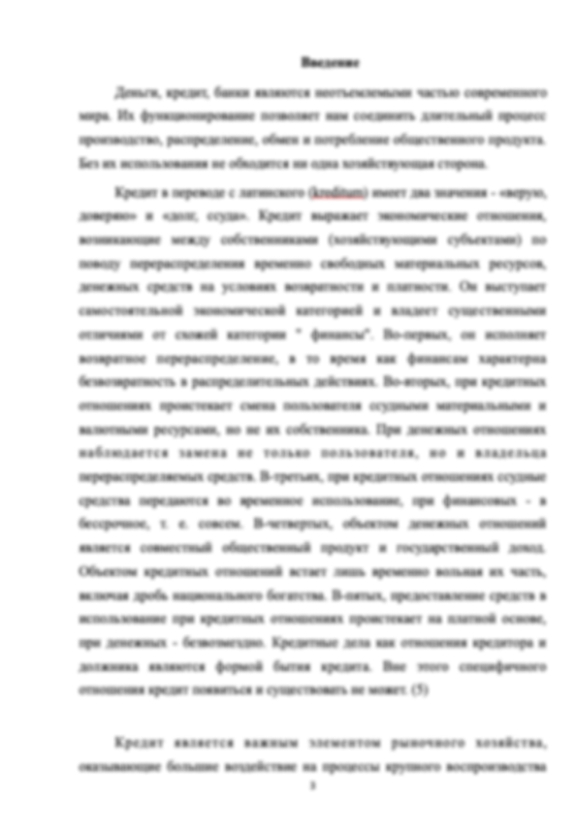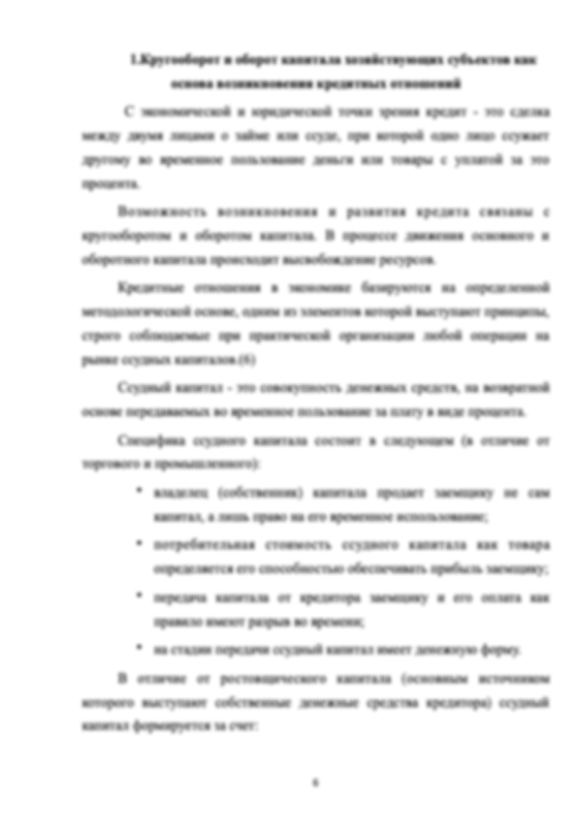Надеюсь продолжить работу с этим обязательным, пунктуальным, глубоко понимающим тему и специфику человеком.
Информация о работе
Подробнее о работе

Climate Strategies of "Big Oil" Companies Under the Global Energy Transition
- 79 страниц
- 2020 год
- 0 просмотров
- 0 покупок
Гарантия сервиса Автор24
Уникальность не ниже 50%
Фрагменты работ
Introduction
After World War II, the world is disrupted, the infrastructures have been destroyed, the productions facilities have become liabilities, and resources have been redistributed and discovered. The goal is clear, rebuilt as fast as possible, and thrive from it, to do so, no expenses are spared. And it worked, the next two decades were characterized by economic growth that seemed unstoppable, always higher demand, and the impression that resources were unlimited. And with the rise of new technologies, better engines and transportation, and an increase in production, the economy started again in the western world. With it, the need for energy and power sources increased to rebuild what has been destroyed during the conflict and answer the demand for production.
Companies believed that nothing could stop this crazy pace and that their actions and strategies had no impact or consequences, or at least were justified in the name of growth and reconstruction. It is at that moment that the term “Seven Sister” appeared to define the seven biggest oil and gas companies post-war (1975). This group of seven has not changed much, considering the merging of some of them to form the current Supermajors; Chevron, Exxon, Shell, BP (known as Anglo-Iranian Oil Company), and Total which came later (2007). Until 1973, these companies controlled 85% of gas and oil resources worldwide (Sampson. 1975).
But in the 1970s, after radical changes in many oil producing countries, the situation changes. The first oil crisis and the creation of the Organisation of the Petroleum Exporting Countries disrupted the growth the “Seven Sisters” knew. They were forced to realize the limited accessibility and amount of fossil fuel available, when the government-owned oil and gas companies (National Oil Companies) took control of those countries’ oil and gas reserves. This first disruption in the energy sector was difficult for the international oil companies, so much that they lost their leadership on the market to the state-owned companies (Hoyos, 2007). According to Hartley and Medlock (2008), national oil companies (NOCs) now control 90% of the world’s proven oil and gas reserves, while IOCs are becoming less capable of accessing large reserves. They stayed and are still the main actors of the sector, but they lost many of their oil and gas assets (PFC, 2012).
By the end of the XX century, the energy sector had known a transition from privately-owned companies to state-owned. In the meantime, another disruption arises, this time coming from policymakers and society. The development of the sustainability and climate change issue, under the Brundtland Commission in 1987, acknowledges that the only way in which the long-term economic growth is possible must include the social and environmental dimensions as well,
8
thus encompassing the three pillars of sustainable development – social, environmental and economic dimensions. According to Mensah (2019) sustainable development is based essentially on social, economic, and environmental factors, which implies that in order to meet sustainable development requirements, the choices must be environmentally and economically viable, economically and socially equitable, and socially and environmentally bearable. This particularity touched the energy sector since the production and consumption of fuels are responsible for half of the emissions in industrialized countries. The oil and gas companies could be one of the biggest players in the worldwide effort to limit greenhouse gases (Anon, 1999). This new context and global awareness changed the perspective of the supermajors on the energy sector. They could not deny anymore the impacts and externalities that a wild production has on its environment. This realization was strengthened by the massive oil slicks that happened in early 2000, shocking populations, and rising their awareness over these issues.
Since the 1950s, the energy sector has evolved and was disrupted, supermajors have come to realize that the resources are not unlimited and unregulated productions has an environmental impact. In this new context, state of mind and business model in which gas and oil companies have been since their creation does not fit with the current landscape anymore. Supermajors have lost their landmarks and are starting to realize the impact of all these trends. But the energy need is increasing due to population and economic growth, while stakeholders become more demanding and aware, competition owns more reserves and the resources are depleting. Supermajors are facing a new energy transition. Although, the current disruption is mostly driven by the recognition of greenhouse gas emissions produced by the exploitation of fossil fuels, as well as the increased interest in renewable energy and the depletion of the non-renewable reserves (Smil, 2010). The global energy sector framework is becoming more complex to answer and the different variables of the equation harder to tackle, requiring more drastic changes and investment.
Therefore, the question is not whether the world needs energy transition or not, but what will powerful oil companies do to change their current portfolio and assets, impact the current structure of the global energy consumption, and do they intend to become energy companies, rather than oil and gas ones, modifying their business model (Nersesian, 2010). To provide an element of an answer, they publish climate strategies. Climate strategies are identified as documents published by Big Oil companies, gathering a different set of actions to comply with environmental issues and shift towards energy transition.
9
Thus, how are Supermajors’ Climate Strategies addressing the energy Transition?
• What are the main challenges Big Oil’s climate strategies should address?
• What are the documented strategies of Supermajors to address these challenges and how are they implemented in practice?
• In what direction these strategies are evolving and what are the main factors influencing this evolution?
To build the supermajors-cases and answer the posed questions, this study relies on a two-stage methodological approach.
At first, the methodology of content analysis is used to extract information related to energy transition from the set of climate strategies. Content analysis is a research technique for making replicable and valid inferences from texts (or other meaningful matter) to the contexts of their use (Krippendorff, 2004). This technique was chosen for several reasons. It allows the analysis of an unstructured strategic data, as well as it helps to analyze large volumes of data within the chosen context, in our case – supermajors’ strategies on energy transition. As a result of this stage, an analytical framework is devised, based on recurrent themes over the supermajors’ strategies.
In the second stage, the actions and commitment of supermajors to address energy transition is analyse through the framework developed in the previous stage. Traditionally, supermajors strategies are analyzed within a matrix, comparing two variables to define their characteristics, and objectives regarding energy transition (Zhong and Bazilian, 2018. Shojaeddinin, 2019). But this approach does not provide an overall vision, lack of agility, and does not provide an answer whereas the direction the strategies are evolving towards.
There are several exercises and research that are looking at a similar topic or trying to answer part of the stated problem. Chesbourgh (2002), Zhong and Bazilian (2018), Shojaeddini et al (2019) defined a framework to categorize supermajors into four categories, analysing their actions and strategies to understand the level of integration of energy transition into their policies. To realize their study, they defined a matrix with two axes, representing different dimensions of the strategies depending on the articles.
In these frameworks, one ax investigate the extent to which the operational competencies of IOCs are linked with their investment in renewables (2018), or the degree of investment in low carbon technologies (Shojaeddini et al, 2019). While the other axis defines another parameter of the analysis, another behaviour that is observed and that provides information on the aims of the strategies. The second axis is looking more at the strategic objectives of the investment rather than
10
the actions in themselves. This framework enables the researcher to shade the degree of commitment and implication of the company into the studied context -energy transition. Most of these studies build their measurement framework considering previous models, adapting it to fit their area, and adding different layers of analysis. Although this analytical framework conceptualizes and asses the degree of change imply within the supermajors, it does not look into how they address it, and for which end goal. Moreover, they include two levels of analysis, focusing on specific energy transition concepts. In this paper, the methodological frame adds a third layer and look into the two challenges of energy transition define in the theoretical frame, long-term economic survival, or short-term revenue.
The results of this research constitute both scientific novelty and practical relevance. Firstly, this thesis contributes to the research field by digging deeper into the unstudied topic of strategies tackling energy transition. It presents another attempt to approach the issue of business adaptation strategies to the global disruption that is the energy transition, assessing the level of integration of this framework into the development strategies of supermajors. Secondly, the instrument that is developed within this work can be considered as a foundation for further deeper research within the topic that can potentially connect the identified level of strategies with energy transition or climate change.
The practical relevance is as well very high in the contemporary context of a general movement towards sustainable development. The research will help to identify the overlooked areas which can allow policymakers to correct sustainable and energy policy directionality failures to capture transition and renewables more fully. This task seems to be of crucial importance considering that energy transition is one of the primary means to deliver a resilient future. Besides, the paper will provide a signal to the analysed companies, the supermajors, in which challenges of energy transition the best conditions are created by their involvement and strategies.
The thesis is further organized into three chapters that are followed by a conclusion. The first chapter provides the theoretical foundations for this research in the form of a literature review. It discusses the main concepts on which this research is built, namely stranded assets, economic opportunities of renewables, divestment movement, and sustainability policies. The exploration of these concepts defines the energy transition framework, as well as present the two challenges inherent to it. The second chapter is devoted to the description of the methodology and approach that is deployed in order to conduct this research. It reveals the methods and frameworks that are used in the thesis and explains the reasoning behind such selection, as well as defines the scope of the research. The third chapter presents the results of the research and their discussion.
11
It is organized as three series of strategic analysis following the different approach that climate strategies are integrating. In each of which the answers for the research questions are given and cross-case comparisons are made where appropriate. The conclusion provides a summary of the most notable results, elaborates on the study’s limitations, and discusses the prospects and directions of the research.
Table of Contents
List of Abbreviations .................................................................................................
4
List of Tables .............................................................................................................
5
List of Figures ...........................................................................................................
6
Summary ...................................................................................................................
7
Introduction ...............................................................................................................
8
Chapter I. Theoretical Base .....................................................................................
13
1.1
The Energy Transition: Economic perspective ..........................................
15
1.1.1
Stranded assets .........................................................................................
15
1.1.2
Creative Destruction ................................................................................
18
1.2
The Energy Transition: Social Perspective ....................................................
20
1.2.1
The Divestment Movement: Illustration of social pressure.....................
20
1.2.2
Policy regulations and governance (SDG & SDS) ..................................
21
Chapter II. Methodology and Approach .................................................................
26
2.1
Case selection process ....................................................................................
26
2.2
Analyzing Climate strategies: content analysis .............................................
28
2.3
Energy Transition Approach Framework ......................................................
31
2.4
Results representation ....................................................................................
33
Chapter III. Results and Discussion ........................................................................
36
3.1
Energy Strategy ..............................................................................................
37
3.1.1
Energy Efficiency ....................................................................................
37
3.1.2
Renewables ..............................................................................................
41
3.1.3
Conclusions ..............................................................................................
44
3.2
Emission Strategy ..........................................................................................
45
3.2.1
Adaptation of Emission ...........................................................................
46
3.2.2
Mitigation of emission .............................................................................
51
3.2.3
Conclusions ..............................................................................................
54
3.3
Business Development and Collaboration Strategy.......................................
56
3.3.1
Quick Win ................................................................................................
57
3.3.2
Long Run..................................................................................................
59
3.3.3
Conclusions ..............................................................................................
63
Conclusion 65
References 69
Добрый день! Уважаемые студенты, Вашему вниманию представляется дипломная работа на тему: «Climate Strategies of "Big Oil" Companies Under the Global Energy Transition»
Оригинальность работы 89%
References
Ahuja, Satinder (2015). Food, Energy, and Water: The Chemistry Connection. Elsevier. ISBN 978-0-12-800374-9. Retrieved 14 April 2018 – via Google Books
Ansar, A., Caldecott, B. L., & Tilbury, J. (2013). Stranded assets and the fossil fuel divestment campaign: what does divestment mean for the valuation of fossil fuel assets? Smith School of Enterprise and the Environment, University of Oxford.
Bansal, P, 2005, ‘Evolving sustainably: a longitudinal study of corporate sustainable
development’, Strategic Management Journal, 26: 197–218.
Bonardi, J–P, and Keim, G D, 2005, ‘Corporate political strategies for widely salient issues’, Academy of Management Review, 30(3): 555–576.
Bowen, Glenn. (2009). Document Analysis as a Qualitative Research Method. Qualitative Research Journal. 9. 27-40. 10.3316/QRJ0902027.
Bloomberg 2017 Saudi aramco said to weigh up to $5 billion of renewable deals Gulf News (Retrieved from https://gulfnews.com/business/sectors/energy/saudi-aramco-said-to-weigh-up-to-5-billion-of-renewable-deals-1.1969857)
BP 2018 Advancing the energy transition (Retrieved from www.bp.com/energytransition/)
BP 2018 Bp and china’s nio capital to explore opportunities in advanced mobility BP (Retrieved
from www.bp.com/en/global/corporate/news-and-insights/press-releases/bp-and-chinas-nio-capital-to-explore-opportunities-in-advanced-mobility.html)
BP 2018 Bp annual report and form 20-f 2017 BP (Retrieved from www.bp.com/content/dam/bp/business-sites/en/global/corporate/pdfs/investors/bp-annual-report-and-form-20f-2017.pdf)
BP 2018 Bp invests in mobile electric vehicle charging company freewire to deliver rapid charging at retail sites BP (Retrieved from www.greencarcongress.com/2018/01/20180130-bp.html)
BP 2018 Bp invests in ultra-fast charging battery company storedot BP (Retrieved from www.bp.com/en/global/corporate/news-andinsights/bp-magazine/bp-invests-in-ultra-fast-charging-battery-company-storedot.html)
BP 2018 Bp to acquire the uk’s largest electric vehicle charging company BP (Retrieved from www.bp.com/en/global/corporate/news-andinsights/press-releases/bp-to-acquire-uks-largest-electric-vehicle-charging-company.html)
BP 2018 Lightsource and bp join forces to drive growth in solar power development worldwide BP (Retrieved from www.bp.com/en/global/corporate/news-and-insights/press-releases/bp-alternative-energy-announcement-december-2017.html)
BP 2018 BP 2018h Tesla wind project starts in U.S. BP (Retrieved from www.bp.com/enus/united-states/home/news/features-andhighlights/tesla-wind-project-starts-in-us.html)
BP Ventures 2019 Our portfolio BP (Retrieved from www.bp.com/en/global/ventures/our-portfolio.html)
69
BP 2019 Energy Outlook.
BP 2019 Sustainability Report.
Chakrabarti S 2012 Reducing gas flaring provides significant opportunities European Bank for Reconstruction and Development
(Retrieved from www.ebrd.com/news/speeches/reducing-gas-flaring-provides-significant-opportunities.html)
Bradshaw, M. J. (2009). The geopolitics of global energy security. Geography Compass, 3(5), 1920-1937.
Brewer, T L, 2006, Public Opinion on Climate Change Issues in the G–8 and G–5 Countries, retrieved 16 October 2007 from .
Brundtland, G., & Khalid, M. (1987). UN Brundtland commission report. Our Common Future.
Buysse, K, and Verbeke, A, 2003, ‘Proactive environmental strategies: a stakeholder management
perspective’, Strategic Management Journal, 24: 453–470.
Caldecott, Ben. 2018. Stranded assets and the enviroenment. Risk, resilience and opportunity.
Routledge exploration in environemental studies.
CDP, 2006, Carbon Disclosure Project 2006 – Global FT500, London: Innovest. / CDP, 2007,
Carbon Disclosure Project 2007 – Global FT500, London: Innovest.
Center for Climate and Energy Solutions. 2020. Global Emissions | Center For Climate And Energy Solutions. [online] Available at: [Accessed 10 May 2020].
Chakrabarti S 2012 Reducing gas flaring provides significant opportunities European Bank for Reconstruction and Development (Retrieved from www.ebrd.com/news/speeches/reducing-gas-flaring-provides-significant-opportunities.html)
Charmaz, K. (2003). Grounded theory: Objectivist and constructivist methods. In N. K. Denzin & Y. S. Lincoln (Eds.), Strategies for qualitative inquiry (2nd ed.), Thousand Oaks, CA: Sage, 249– 291.
Chesbrough, H., 2002. The role of the business model in capturing value from innovation: evidence from Xerox Corporation's technology spin-off companies. Industrial and Corporate Change, 11(3), pp.529-555.
Chevron 2017 2016 corporate responsibility report highlights (Retrieved from www.chevron.com/-/media/shared-media/documents/2016-corporate-responsibility-report.pdf)
Chevron 2018 Chevron technology ventures Chevron (Retrieved from www.chevron.com/technology/technology-ventures)
Chevron 2018 Chevron technology ventures launches future energy fund Chevron (Retrieved from www.chevron.com/stories/chevrontechnology-ventures-launches-future-energy-fund)
Chevron 2018 Climate change resilience: a framework for decision making Chevron (Retrieved from www.chevron.com/-/media/sharedmedia/documents/climate-change-resilience.pdf)
Форма заказа новой работы
Не подошла эта работа?
Закажи новую работу, сделанную по твоим требованиям


